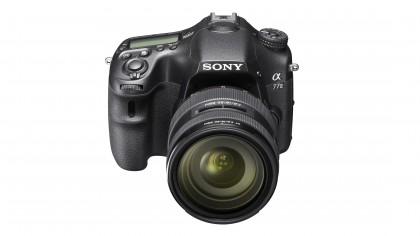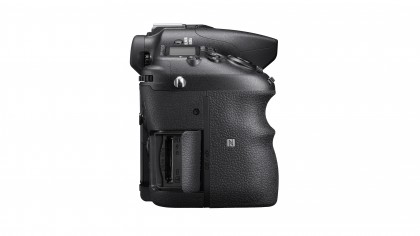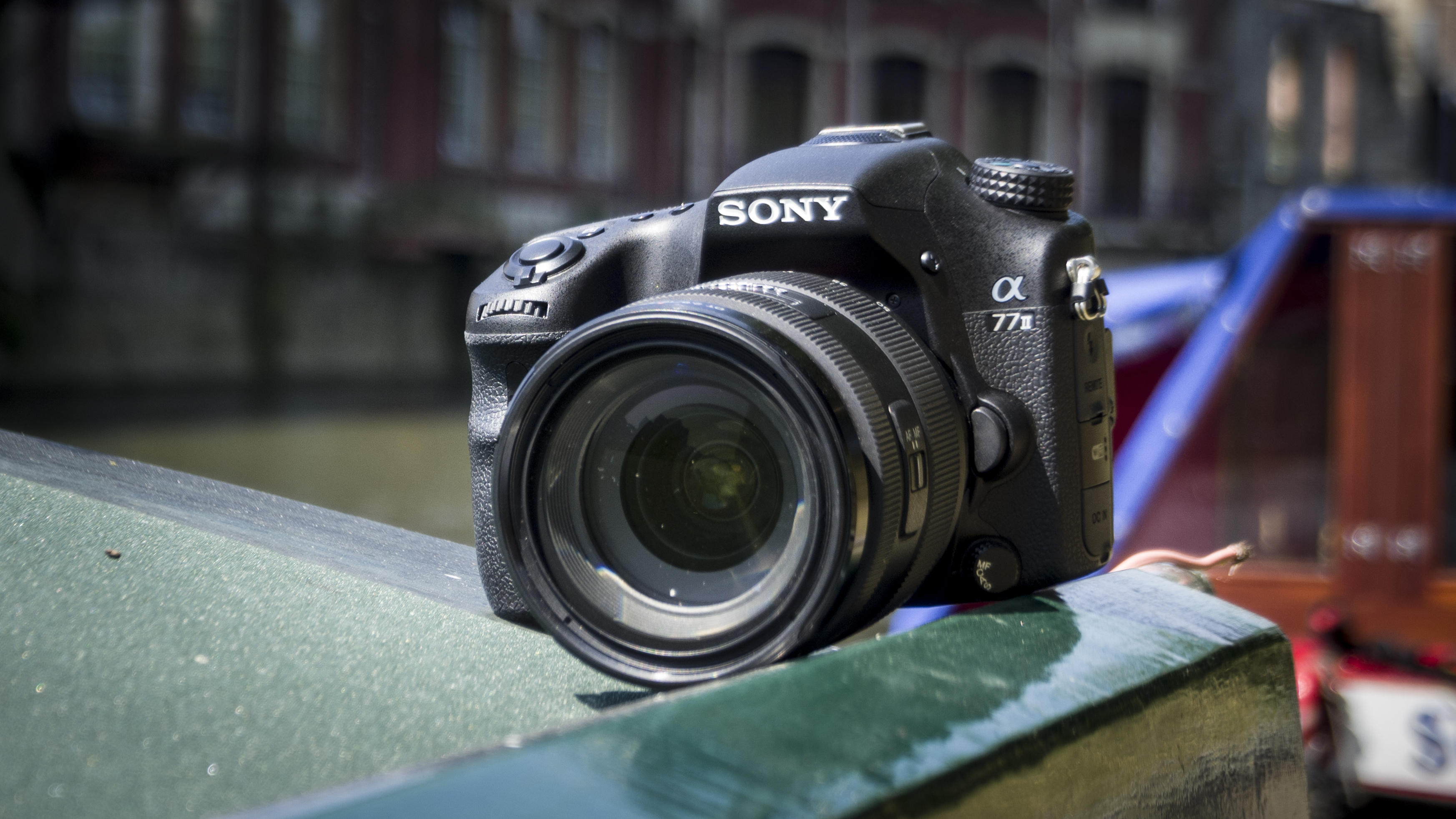Why you can trust TechRadar
Close comparison of an Alpha 77 Mark II with the original Alpha 77 reveals few obvious differences. The two cameras have the same overall shape and control layout and the vertical grip that was produced for the original A77 can be used with the new camera.
There is a slight difference to the new camera's mode dial, however: it has a lock button to prevent it from being knocked out of position. The hotshoe has also been changed from the Sony (Minolta) proprietary shape to the more common universal style. It has also been upgraded to make it a multi-shoe capable of accepting a range of accessories.

In addition, the function (Fn) button has a greater range of customisation options. The A77 II has 27 features that can be assigned to one of the twelve slots in the Function menu. If you like using the Picture Effects (Toy Camera, Pop Color, Posterization, Retro Photo, Soft High-key, Partial Color, High Contrast Mono, Soft Focus, HDR Painting, Rich-tone Monochrome, Miniature, Watercolor, Illustration), it's worth assigning this and image quality to the Function menu so that you can quickly turn off raw recording and access the effects.
As with other Sony cameras, the Creative Style options (Standard, Vivid, Neutral, Clear, Deep, Light, Portrait, Landscape, Sunset, Night, Autumn, Black and White and Sepia), which give JPEG images a particular appearance, can be used when shooting raw images simultaneously.
It's also possible to customise the function of many of the buttons on the camera, but I found that the default settings worked well.
Like the camera it replaced, the Alpha 77 Mark II feels pretty tough and durable. The grip on the front of the camera is deep and generously sized to provide a comfortable hold. There are also seals to keep dust and moisture at bay so you can use the camera in fairly harsh environments.

Like the A77, the A77 II has plenty of buttons and dials to give direct access to many of the key features, as befits an enthusiast-level camera.
It's quick and easy to select the desired autofocus point using the mini-joystick style controller on the back of the camera. Helpfully, if you find 61 points too many to choose from in Flexible Spot mode you can restrict it to just 15.
Strangely, Sony has continued with having the 12fps shooting option located on the mode dial. Given the rethinking about the AF options, we might have expected this to be part of the drive mode options. Sony's explanation is that it's a major feature of the camera and that there are aspects such as the aperture locking at the start of the shoot that need to be considered.
Screen gem
On the back of the camera is a three-inch vari-angle screen, which provides a detailed, clear view of the scene, but isn't touch-sensitive. Its resolution, however, has been boosted from 921,000 dots to 1,228,000 dots and, like the screen on the new Nikon D810, it's an RGBW (red, green, blue, white) device for greater brightness.
While the screen is useful for composing images from awkward angles, the articulating hinge seems unnecessarily complicated and it takes a while to get used to its quirks and limitations. The hinges on cameras such as the Canon 70D and Nikon D5300 are much more straightforward.
As on the Sony A7 and 7R, the 2.3-million dot electronic viewfinder (EVF) is bright and clear with plenty of detail visible. As usual with an EVF, this brings the benefit of seeing the image as it will be captured.
